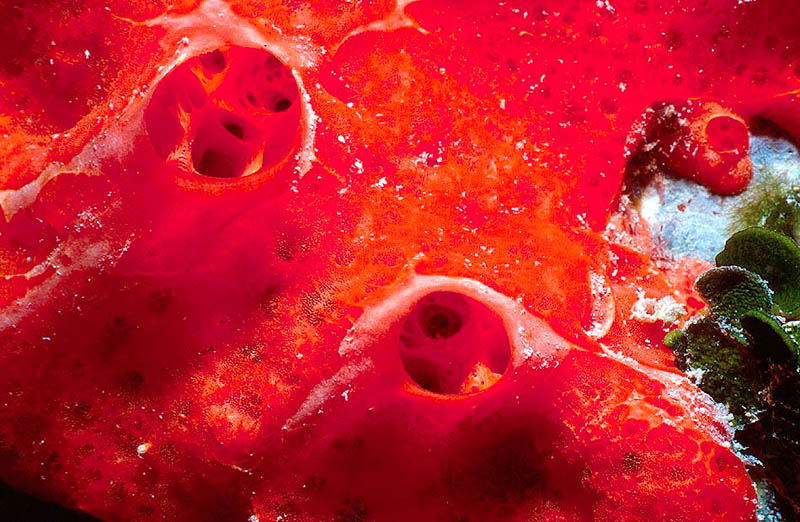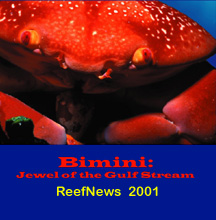
Volume 5 Number 6
Take a Close Look at a Colorful Sponge


Volume 5 Number 6
Take a Close Look at a Colorful Sponge

When big storms stir up the ocean, the water around the reef can be filled with sand and silt. All this stuff floating in the water can make it hard to see very far. Although you usually can see 100 feet underwater on a calm sunny day in the tropics, on a cloudy day after a big storm you might be lucky to see 20 .
So, when you can't see very far and the light isn't very good, you take a camera with you that can take closeups! That's how I came to take this neat picture of a Red-Orange Encrusting Sponge. The camera filled this entire picture with about 3 inches of the sponge (measured across the picture from side to side), showing the sponge in great detail. Depending on the size of your computer screen, the sponge in this picture is likely bigger than life size.
Sponges are animals that live on the bottom of the ocean. They are very simple animals. They catch their food by straining it out of the water. The sponge pumps water through its body, and the seawater gets squeezed through tiny tubes that run through the body of the sponge. From this water, the sponge will catch microscopic plankton that it eats.
The water leaves the sponge through larger tubes that work like chimneys or exhaust pipes. Many small tubes come together to make bigger tubes, and these bigger tubes join together to make a hole in the body of the sponge. This hole is called an excurrent pore, which is just a fancy name for a hole (a pore) where the water comes out (the "excurrent").
Look down into the excurrent pore to see the many tubes that come together inside the body of this sponge.
 |
This picture first appeared on the ReefNews CD-ROM, "Bimini: Jewel of the Gulf Stream." Order your own copy of this educational CD-ROM from the ReefNews Online Catalog. |
--------------------
e-ReefNews and embedded illustrations are
Copyright © 2001, 2003, ReefNews, Inc.
ReefNews ® is a registered trademark of ReefNews, Inc.